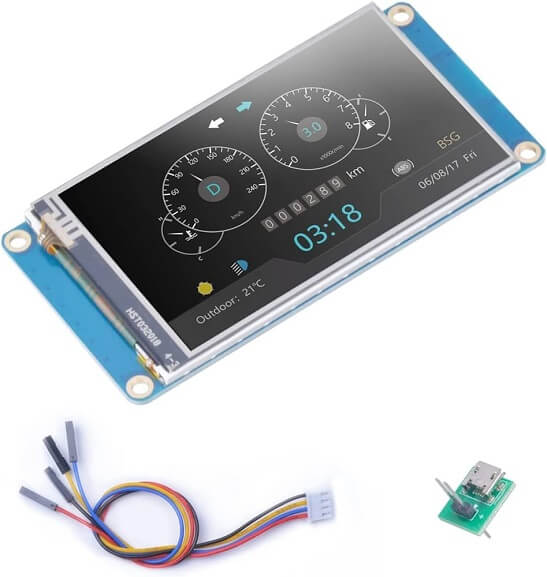
引言
仪表盘串口屏在现代车辆中发挥着至关重要的作用,为驾驶员提供必要信息并提升整体驾驶体验。无论是显示车速、导航指示还是车辆诊断信息,选择适合仪表盘的串口屏对于确保最佳可视性和功能性至关重要。本文将探讨选择仪表盘串口屏时需考虑的关键因素,并介绍市场上可用的多种有效解决方案。
关键考虑因素
- 尺寸与宽高比:仪表盘串口屏的尺寸应与仪表盘可用空间成比例,同时确保驾驶员易于阅读。此外,考虑宽高比至关重要,以确保串口屏能容纳不同类型的信息而不影响可视性。
- 分辨率与清晰度:高分辨率对仪表盘串口屏至关重要,可确保画面清晰锐利,尤其在显示地图或诊断信息等复杂细节时。更高的像素密度可带来更锐利的图像和在不同光线条件下的更好可读性。
- 防眩光与反射:由于仪表盘串口屏靠近挡风玻璃,防眩光和防反射特性至关重要,可最大限度地减少阳光或车内灯光造成的干扰。选择具备这些特性的串口屏可显著提升能见度并减轻驾驶员眼部疲劳。
- 触摸屏技术:触摸屏功能在仪表盘串口屏中越来越受欢迎,为驾驶员提供直观的交互体验。电容式触摸屏技术提供响应迅速且准确的触控输入,提升驾驶过程中的操作便利性。电阻式触摸屏是另一种选择,具有耐用性和与戴手套操作的兼容性。
- 与车辆系统集成:与导航、娱乐和驾驶辅助功能等其他车辆系统的无缝集成对仪表盘LCD串口屏至关重要。与车辆接口和协议的兼容性确保了顺畅的通信和数据交换,为驾驶员提供一致的用户体验。
有效的串口屏选项
- 串口屏:串口屏因其鲜艳的色彩、快速的响应时间和显示各种类型信息的多功能性,在仪表盘应用中广泛使用。这些串口屏提供高分辨率和卓越的图像质量,使其适合动态仪表盘显示。
- OLED串口屏:有机发光二极管(OLED)串口屏以深黑色、高对比度和节能特性著称,是仪表盘应用的理想选择,尤其在视觉效果至关重要的场景中。OLED串口屏可呈现生动色彩和清晰图形,提升仪表盘整体美观度。
- HUD串口屏:抬头显示(HUD)技术将信息投射至挡风玻璃,形成虚拟串口屏,使信息出现在驾驶员的视线范围内。HUD 串口屏在不分散驾驶员注意力情况下提供关键信息,提升驾驶安全性和便利性。
- 曲面串口屏:曲面串口屏设计与现代车辆仪表盘曲率相匹配,呈现流畅一体化的外观。这些串口屏提供沉浸式视觉体验,同时提升仪表盘美观性并最大化屏幕空间用于信息显示。
- 高亮度串口屏:高亮度LCD串口屏专为在强光环境下保持可视性而设计,确保仪表盘上的信息在阳光直射下仍清晰可读。这些串口屏可提升可读性、减少眩光,从而提升驾驶舒适性。
结论
选择适合仪表盘的串口屏需综合考虑尺寸、分辨率、防眩光性能、触摸屏技术及与车辆系统的集成性等因素。凭借多种有效选项,包括串口屏、OLED串口屏、HUD串口屏、曲面串口屏和高亮度串口屏,汽车制造商可根据具体需求定制仪表盘串口屏,为驾驶员提供无缝的用户体验。通过优先考虑这些关键因素并探索创新显示技术,汽车行业可继续提升仪表盘串口屏的功能性、美观性和驾驶员满意度,为道路安全与舒适性做出贡献。